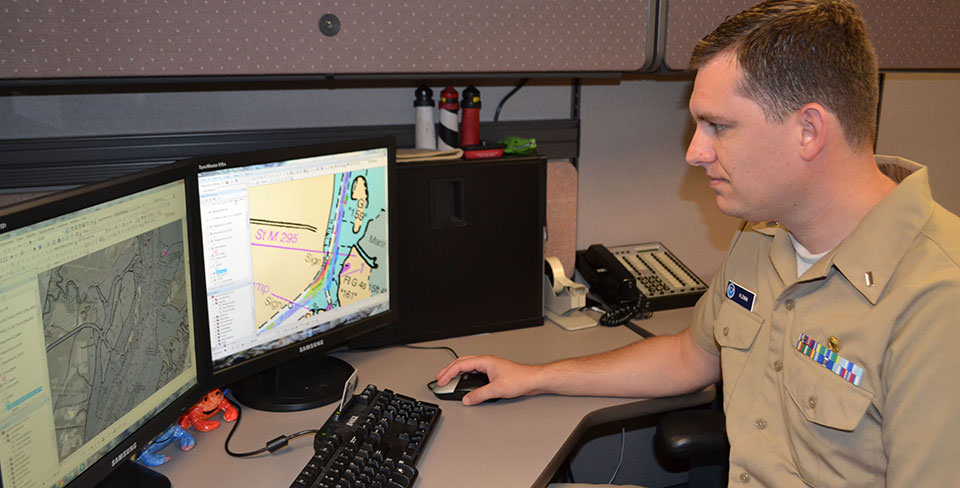How long does it take to produce a nautical chart?
The time needed to make a new nautical chart depends on how many pieces of the puzzle are in the box.

NOAA's Office of Coast Survey produces nautical charts for U.S. coastal waters, including the Great Lakes and U.S. territories.
Cartographers create new nautical charts by piecing together a puzzle. Sometimes all the pieces are in the box, other times surveyors and others have to go out into the field to gather the pieces of missing information. To a large degree, the more pieces are on hand, the quicker the chart assembly time.
Nautical charts are uniquely designed to provide information needed for ships to safely navigate. Natural features, such as the depth of the water, the shape of the shoreline, and the locations of rocks and other dangers, are critical pieces of the chart. The position and characteristics of man-made objects, such as bridges and cables that may pass over navigable rivers, and the delineation and depth of dredged channels, are also key bits of information. A distinct set of features (rarely shown on other maps) include the positions and descriptions of buoys, beacons and lights, called aids to navigation.
For a new chart, some of this information will already be available. If the required data is not available or the information is too old, then NOAA must acquire new data from a range of providers: NOAA's own hydrographic survey ships and planes (water depth and shoreline), the U.S. Army Corps of Engineers (ship channel limits and depths), and the U.S. Coast Guard (aids to navigation information) and many others.
Compiling the data may take as little as six months; but scheduling, collecting, and processing new hydrographic or topographic surveys can extend chart creation to several years, depending on the location and extent of the surveys required and competing requirements from other charts.
Once a new chart is created, the work has only begun. Keeping a chart up-to-date is never ending. Changing shoreline, shifting seafloors, silt deposits, discovery of submerged dangers, and repositioned buoys are only a few reasons why nautical charts must be constantly updated.
Search Our Facts
Get Social
More Information
Last updated: 06/16/24
Author: NOAA
How to cite this article